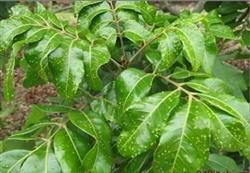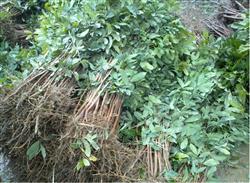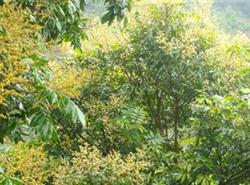Control methods of longan gall mite

The damage was caused by sucking juice in the terminal buds and spikes of longan shoots, which led to the shortening of spike internodes, and the florets could not bloom and develop into bloated flowers for a long time. Fruit growers in Guangdong are commonly known as "ghost flowers"; the new shoots are arched and claw-shaped, and the leaf edges curl inside, which can not be spread out. Fruit growers call them ghost shoots, especially the ghost flowers can not produce a serious impact on the yield. The morphological characteristics of adult mites and nymph mites are small and invisible to the naked eye, the shape of carrot can be seen under high power magnifying glass, and the number of dense rings on the back and ventral side of litchi gall mite is similar. The occurrence characteristics of gall mites like shade and fear of light, so they mostly occur in the undeveloped compound leaves of the new shoots of the inner chamber shade branches. In the middle of the year, the insect population density is the highest, more than 100 gall mites can be hidden in a floret, and there are mites in the ovary and anther, followed by autumn tip and summer shoot. The gall mites in the shoot stage were mainly concentrated in the terminal bud, and the transfer activity appeared in the compound leaf stratification and leaf expansion stage. Prevention and control methods 1. Cut off the "ghost flowers" and "ghost tips" and then clear the garden for treatment. 2. Planting thistle in the garden and surrounding open space to facilitate natural enemies to prey on mites to inhabit and breed. 3. Spraying in the active stage of the transfer of the leaf gall mite in the new shoot. Use 20% diclofenac EC 800ml 1000 times or 40% omethoate 1000 times.
- Prev

Seed Seedling raising technique of Longan
Longan, also known as round meat and longan meat, has the effect of tonifying heart, nourishing blood and calming the nerve. it is a well-known bulk medicine and food. Mainly produced in Fujian, Guangdong, Guangxi, Sichuan and Taiwan and other places. Its cultivation can be divided into two kinds: seed propagation and grafting propagation. Seed breeding techniques are introduced as follows: first, the selection of nursery.
- Next

Fruit drop, fruit cracking and prevention of longan
Scientific fertilization is required according to longan growth characteristics and annual growth results, which is the basis of early fruit, high yield and high quality of longan trees. The experiment shows that the longan orchard with 1 ton of fruit per mu applies 25 kg of pure nitrogen per year (of which the nitrogen of organic fertilizer accounts for about 40% of the total nitrogen application in the whole year). Nitrogen, phosphorus pentoxide, potassium oxide, calcium oxide,.
Related
- Moge, come on! The staff of the peasant association in the producing area of cantaloupe were frightened when the crowd gathered.
- Causes and Solutions of low Fruit setting rate of Apple
- Symptoms and control measures of passion fruit virus disease
- Fruit growing lesson: how do apple orchards keep high yields?
- Can you build orchards in the mountains? What are the pros and cons?
- How to manage the coloring period of Crisson grape?
- This paper introduces the processing technology of two kinds of fig products.
- How much is a month for retired teachers in rural areas by 2020?
- How can strawberry planting increase sugar content? We should pay attention to management in many aspects.
- What are the cultivation techniques on how to improve the yield of golden fruit?

